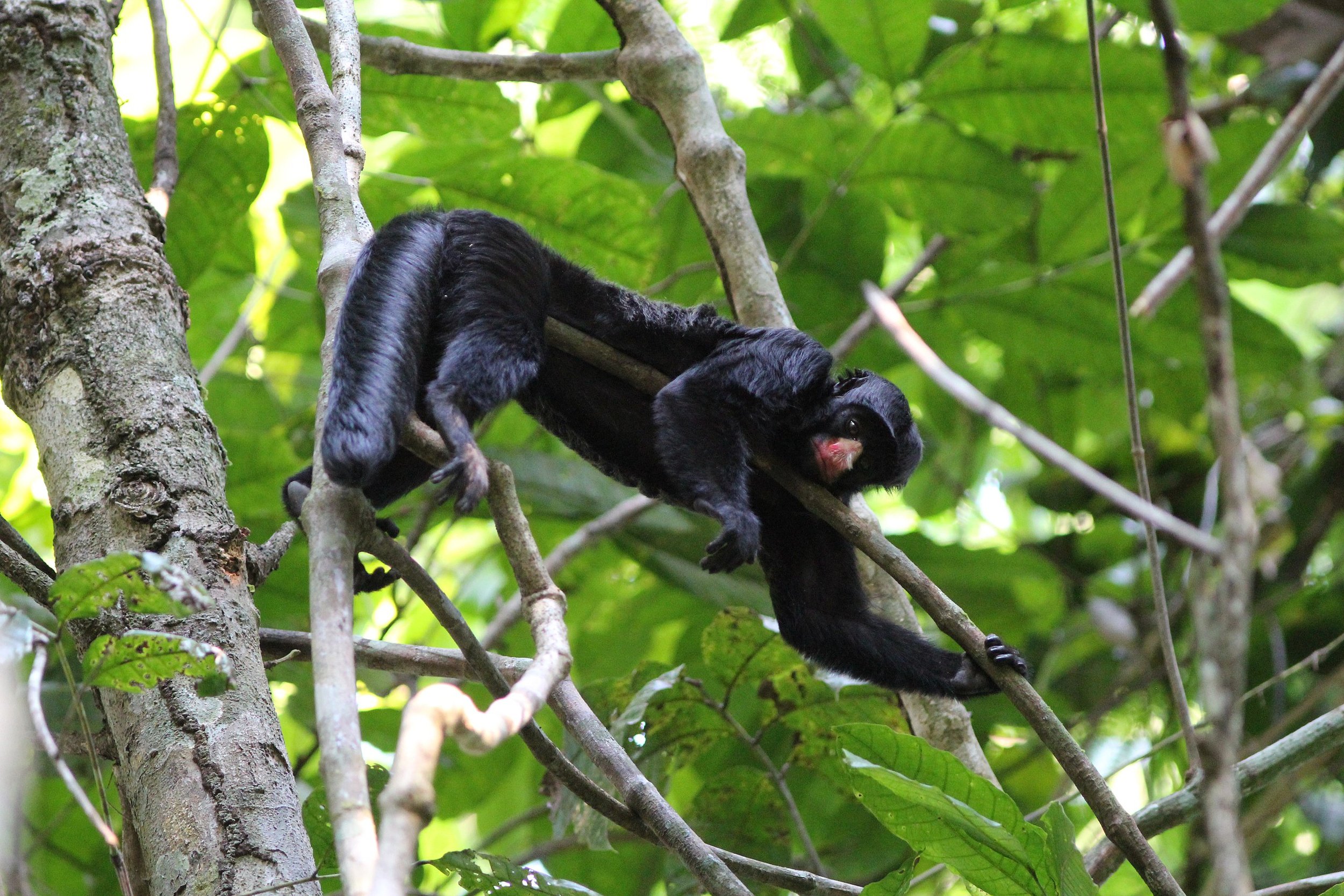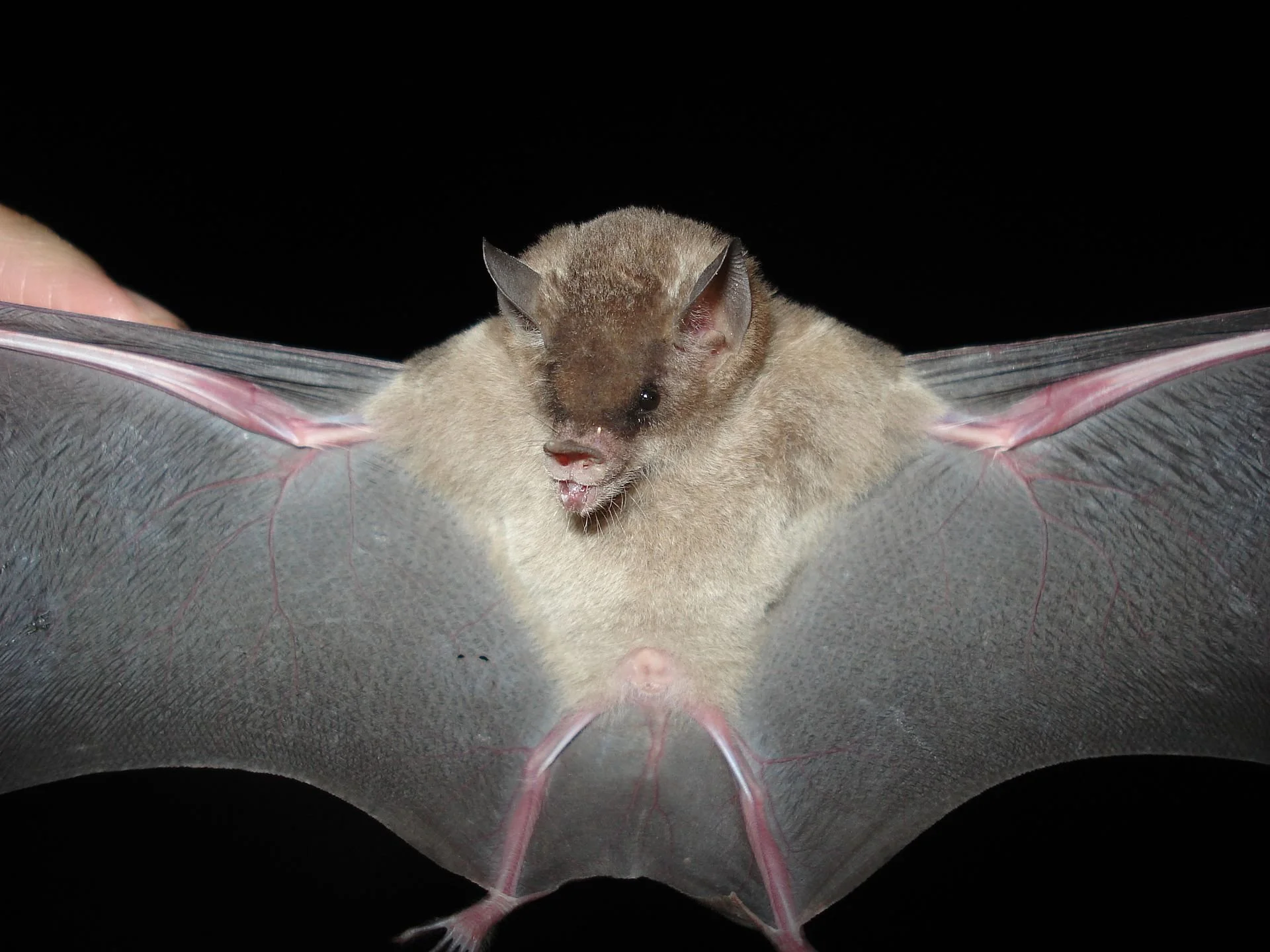Endangered species in Brazil
Brazil is considered to be the country with the richest flora and fauna on the planet. Unfortunately, there are almost 4,000 different endangered species in Brazil (both plants & animals). Not all of them get enough attention, though. The ones we'd like to highlight are somewhat special and rather unheard of - and that should definitely change, as we may never see or hear of them again in case of their extinction, which is estimated to happen within a few decades.
Cotinga maculata male, photographed in RPPN Estação Veracel – Private Reserve of Natural Heritage, Porto Seguro, State of Bahia, Brazil by Marco Cruz
BANDED COTINGA
The bird is endemic to southeastern Brazil. Its population of mature individuals is estimated between 250-999. The majority of the species is concentrated in the state of Bahia, with occasional records from the nearby state of Minas Gerais. It most likely once occurred in Rio de Janeiro and Espírito Santo, but has since been extirpated.
The greatest threat to the banded cotinga's survival is deforestation. Continued habitat fragmentation has also complicated matters, sending populations into a sharp decline. Some protected areas, such as the RPPN Estação Veracel and Reserva Serra Bonita, are now thought to serve as bastions for this species.
White-nosed saki (Chiropotes albinasus), by Rich Hoyer - Flickr
BLACK BEARDED SAKI
The genus name Chiropotes means "hand-drinker" as they have been observed using their hands as ladles for scooping water into their mouths. This behaviour is thought to be a way of maintaining and protecting their magnificent beards. They live in riparian areas, forests and rainforests.
They are social animals, commonly grooming and playing with one another, even with those of other primate species. Black bearded sakis can be found in troops of 20 to 30 individuals. Individuals of a troop will separate and rejoin throughout the day, have large home ranges, and travel long distances daily.
Black bearded sakis are a critically endangered species. Habitat fragmentation, habitat destruction and poaching pressure are just a few negative impacts of the urbanization in the Brazilian Amazon. Forest fragmentation has resulted in behavioural changes that allow the species to adapt but could be detrimental for its conservation status in the long run. Due to the decreasing size of land black bearded sakis can live on, there has been evidence proving a lack of reproduction in a period of 3.5 years. This happens because of the lack of resources in such a small, isolated habitat. Smaller fragments of the forest also result in denser populations, which creates an environment where the monkeys are more prone to disease than those others living in undisturbed areas.
This species also face a hunting problem for bushmeat and its tails are used as dusters.
Buffy-headed marmoset in Feliciano Miguel Abdala Reserve, Brazil, by Giovanni Mari - Flickr
BUFFY-HEADED MARMOSET
The species is a rare species of marmoset, native to Brazil. Their favourite food is tree gum, which they access by clinging to trees as they have claws instead of nails on all digits except the big toes.
Buffy-headed marmosets are social arboreal animals. They live in groups of up to fifteen consisting of related individuals, where females dominate males.
Buffy-headed marmosets are threatened by the fragmentation of their habitat through mining, agriculture and cattle ranching, tree plantations, and urbanization. These marmosets also suffer from hunting for pets.
Buffy-headed marmosets are likely to play an important role as seed dispersers in their ecosystem. These marmosets may also influence plant growth as they feed on plant gums.
DEKEYSER'S NECTAR BAT
This bat is endemic to the Cerrado of Brazil. It is dependent on caves for its roosts during the day. It is found in dry forests with calcareous outcroppings.
One of the threats to this species is inappropriate efforts to eradicate vampire bats. Vampire bat culling techniques are often applied indiscriminately, and end up killing other species of bat, including endangered species. Current vampire bat management practices have serious and significant negative effects on its population. In 1996, this species was evaluated as vulnerable by the IUCN, which was later revised to near threatened in 2008. In 2016, its status was again revised to endangered. It is listed as endangered because the population likely consists of fewer than 2,500 individuals, its distribution is patchy and limited, and its suitable habitat is rapidly declining.
FIN WHALE
Fin whales are the fastest amongst the cetaceans and have been seen to breach completely out of the water. Males and females are very similar in appearance, with females slightly longer than males. They have two blowholes, with a single, longitudinal ridge extending from the tip of their snout to where their blowholes begin.
It is found in the Pacific, Indian, Atlantic and Arctic Oceans. Fin whales, like other large whales, are threatened by changes to the environment, including habitat loss, climate change and toxins. At present, fin whales are threatened by manmade injuries, the most serious being collisions with boats. They are also threatened by commercial whaling. The majority of whale meat is bought on the Japanese market.
Fin whales have a place at the top of the food chain and an important role as regards the marine environment's overall health, consuming vast amounts of plankton as well as other prey items.
WHAT YOU CAN DO TO PROTECT ENDANGERED SPECIES:
1. Recycle & buy sustainable products.
Never buy furniture from wood from rainforests.
Recycle your cell phones, because a mineral used in cell phones and other electronics is mined in gorilla habitat.
Minimise your use of palm oil because forests, where tigers live, are being cut down to plant palm plantations.
2. Never purchase products made from threatened or endangered species.
Overseas trips can be exciting and fun, and everyone wants a souvenir. But sometimes the souvenirs are made from species nearing extinction. Avoid supporting the market in illegal wildlife including tortoise-shell, ivory, and coral.
Also, be careful of products including fur from tigers, polar bears, sea otters and other endangered wildlife, crocodile skin, live monkeys or apes, most live birds including parrots, macaws, cockatoos and finches, some live snakes, turtles and lizards, some orchids, cacti and cycads, medicinal products made from rhinos, tiger or Asiatic black bear.
3. Stop your pension savings from funding deforestation.
£1 of every £5 invested in UK pensions can be linked to deforestation.
If you are a pension holder, contact your pension fund providers and employers to make sure that your money is in line with your values and not driving deforestation, conversion or human rights abuses.
4. Support An Organization That Fights To Save Endangered Species.
Volunteer, donate or materialize your support by adopting your favourite endangered species.
5. Lead by example.
Learn more about endangered species and spread the knowledge. The more people are aware of the issue, the easier it is to fight it.
Sources:
https://animalia.bio/banded-cotinga?custom_list=868
https://animalia.bio/black-bearded-saki?custom_list=868
https://animalia.bio/buffy-headed-marmoset?custom_list=868
https://animalia.bio/dekeysers-nectar-bat?custom_list=868
https://animalia.bio/fin-whale?custom_list=868
https://www.endangered.org/10-easy-things-you-can-do-to-save-endangered-species/
https://globalcanopy.org/insights/news/uk-pensions-invested-in-companies-linked-to-deforestation/
https://www.hl.co.uk/news/articles/how-to-stop-your-pension-savings-from-funding-deforestation





